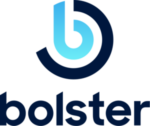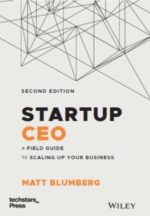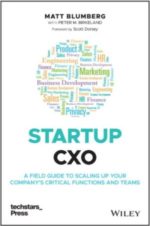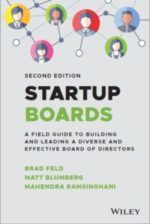Book short: Myers-Briggs Redux
Book short: Myers-Briggs Redux
Instinct: Tapping Your Entrepreneurial DNA to Achieve Your Business Goals, by Tom Harrison of Omnicom, is an ok book, although I wouldn’t rush out to buy it tomorrow. The author talks about five broad aspects of our personalities that influence how we operate in a business setting: Openness to Experience, Conscientiousness, Extroversion, Agreeableness, and Neuroticism. These traits are remarkably similar to those in the popular Myers-Briggs Type Indicator that so many executives have taken over the years.
It’s not just that you want to be high, high, high, high, and low in the Big 5. Harrison asserts that successful entrepreneurs need a balance of openness and conscientiousness in order to be receptive to new ideas, but be able finish what you start; a balance of extroversion and agreeableness so that you have enough energy but also have the ability to work with others; and not too much neuroticism, as you have to be able to take risks.
The book not only talks about how to spot these factors, but how to work around them if you don’t have them (that part is particularly useful, but he doesn’t do it for all five factors). He also talks about the entrepreneurial addiction to success, and creating the all-important Servant CEO culture, which I certainly agree with and wrote about early on in this blog in my “Who’s The Boss?” posting.
Harrison does have a great section on how “Nice Guys” can and should be winners; how being nice and having guts aren’t mutually exclusive, and he gives a well-written Twelve Rules for expressing the Nice Guy gene:
– Don’t walk on other people, but don’t let them walk on you
– Respect the big idea in everyone
– Own everything
– Never let ’em see you sweat Keep it simple
– Never think in terms of “So what have you done for me today?”
– More is less
– Live your word consistently
– Don’t lie: fix what’s causing you to think you need to lie
– Never forget to thank, congratulate, or acknowledge people for their efforts
– Keep your door and your heart open
– Never stand in the way of balance
The most annoying part of the book is that Harrison keeps making references to a handful of genetic studies about twins to prove on and off that traits are inherited and that inherited traits can be expressed in different ways. These references are mildly interesting, but they detract from the substance of the book.
Overall, the book has some interesting points in it, but it’s too much like Jim Collins’ Good to Great and Built to Last, only without the depth of business research and case studies. Plus, Harrison does the one thing I find most irritating in business books — he is clearly an expert in one thing (business), but he unnecessarily pretends to be an expert in another thing (genetics) in order to make his point.
links for 2006-03-28
-
Brad has a good posting today about entrepreneur accountability — along the lines of my “Forecast Early and Often” theme. — /2005/11/notsocounter_cl.html
Million Dollar Baby
Million Dollar Baby
I had one of those aha moments today while looking over some insurance numbers with Rob Mattes, our CFO (and a gentleman and a scholar). I know it’s dangerous to think about dollars in the aggregate across years, but I’m pretty sure that by the end of this calendar year, we will have spent close to $1 million on insurance over the course of the 7 years we’ve been in business at Return Path.
I think I gagged when I realized that. I mean, one million dollars? Really? How is that possible? And how many other ways would I have rather spent that million dollars?
Well, it all adds up — we have coverage for, among other things, E&O (errors & omissions), D&O (directors & officers), Employer Practices Liability, Fiduciary, Property & Casualty, General Liability, Employee Benefits Liability, Auto Liability, Umbrella, Business Interuption, Property, Workers Comp, 401k Fidelity Bond. And we have two lengthy, expensive run-off policies for E&O and D&O that are legacy policies resulting from acquisitions we did along the way — to cover those companies’ prior boards for liabilities discovered after the fact for incidents that happened on their watch.
In aggregate, these policies all get us $13 million in coverage and $120,000 in deductibles, for what’s currently costing us at $250,000/year — although in a steady state, we’d only be running at about $120,000/year in expense.
I guess in the end it’s worth it, and of course I only gag because we haven’t really *needed* the insurance, but I guess that’s what insurance is for. It really does look a little absurd when you add it all up, though.
Maybe it’s all just part of the business getting bigger and older that I just need to suck it up and get used to. I’m sure if I added up how much money we’ve spent on free soda, coffee, and pizza over 7 years, I’d be similarly astonished.
A New Member of the Internet Axis of Evil
A New Member of the Internet Axis of Evil
Fred has written a series of postings over the years about the Internet Axis of Evil, roughly in order here, here, here, here, and here (I’m sure I missed some). The basis of the postings is great — that, as Fred says:
There’s a downside to an open network. It’s the same downside that exists in an open society. There are a lot of nuts out there who want to do bad things (the evildoers as George W Bush calls them). And we all have to spend a lot of time and money making sure that we are protected from them. It’s a huge burden on an open network and an open society, but i see no way around it.
So far, the members of Fred’s club are:
Spam
Viruses
Adware/Spyware
DNS Hacking
Comment Spam/Link Spam
Phishing
Click Fraud
Really Simple Stealing
So today, I propose a ninth member of this esteemed club: Survey Fraud. A lot of people don’t know it, but one of our biggest businesses at Return Path is market research — or a subset of market research known as online sample. Our brand for this part of our business has historically been Survey Direct , but next week, entirely appropos of this posting, we are changing the name to Authentic Response.
What we do in this business is work with market research firms to drive qualified, interested, double opt-in members of our research panel to take online quantitative surveys. It’s a little like the email database marketing business (which is why we’re in it), although the dynamics of qualifying for and taking surveys are totally different than lead generation, and we have a separate team that supports the research business.
Occasionally, surveys carry a small cash incentive, usually in the $2-5 range, to thank people for the time they spend taking the survey, which can often be 15-20 minutes. Usually we just pay people via PayPal, although we also allow people to donate their incentives to our favorite charity, Accelerated Cure. You’d think at $2 a pop, it’s not so interesting, but there seems to be a cottage industry that’s sprouting up that I’m now calling Survey Fraud — the art of faking your way into a survey or completing a survey multiple times, in order to collect as much incentive money as possible.
First, there are message boards on the Internet where the Survey Fraud perpetrators hang out and share information with each other about surveys — things like “hey for XYZ survey, you need to be a 40-year old homemaker in zip code 12345 with a college degree” that encourage people to fake their way in.
Second, there are more serious thugs out there who write bots and scripts and create dozens or hundreds of phantom online identities in order to “take” a single survey 100 times over. $2 adds up when you can earn it 100x in 5 minutes with the help of a little Perl script.
The people who conduct Survey Fraud are just as pathetic as the other members of the Internet Axis of Evil. We have to constantly stay 10 steps ahead of them in making sure our system has state of the art security — a feature we are trademarking called Authentic Validation — in order to fend them off and make sure our clients get 100% authentic survey results as promised. I can’t share with you our complex security methodology, since that would compromise it (geez, I sound like the White House, sorry), but as Fred says, it’s a huge burden that we have to bear in order to run our survey business on the Internet.
So congratulations to our Authentic Response team on their new name and their constant efforts to fight the Axis of Evil, and to all who commit Survey Fraud, please take your “business” elsewhere!
A Study In Contrast
A Study In Contrast
We just visited India for a great two weeks of vacation (with one quick business meeting thrown in for good measure). The most striking part of the country was its seamless transition between old and new. Bumpy dirt roads and new, gleaming highways give way to each other at random intervals. Streets in many cities and most smaller towns are filled with trucks fighting for space with cows, oxen, camels, elephants, dogs, and donkeys. Ads for cell phones and new Internet cafes are mixed in with storefronts prominently advertising land line phones, since almost no one in outlying areas can afford or has electricity to power an in-home phone.
Anyway, if you’re up for a quick travelog on our personal web site, you’re welcome to have a break and visit India with us.
Agile Marketing
Agile Marketing
As I wrote about last week, Return Path has been using the Agile Development methodology and Rally Software as our product development framework for about a year now. It’s worked so well for us, that the concepts, and even the tools, have started to spread virally to other parts of our business.
About two months ago, I took over our marketing department as interim CMO. Our marketing efforts have become increasingly complex in the last year or so as we’ve grown and added multiple new product lines, and as a result, the demands on our relatively small department were becoming unmanageable. As I wrote about a couple years ago, Marketing is like French Fries — you can always consume just a little bit more of it — and we were really feeling the strain on our marketing team.
As I thought about the challenges that faced our marketing efforts, they reminded me a lot of the challenges that faced our product development efforts before we implemented Agile/Rally for those teams. Multiple external and internal stakeholders with competing priorities. Poor communication. Needing to be nimble and agile in a process that has some inherent long lead-time items.
So we tried an experiment — we tried implementing Agile Marketing. We have learned a lot in the past couple of months and have adapted the processes a little bit to the needs of marketing, but our marketing planning, execution, and feedback cycles now look an awful lot like our engineering ones. After one week struggling with an Excel spreadsheet, macros, and conditional formatting, we even decided to try using Rally to run our process, even though some if its terms and functionality are really designed for software development.
We now plan marketing in six-week “releases,” each of which has 1-2 core themes and a planning session up front with our head of sales and business GMs. Each release has two, three-week “iterations” where we do mid-course corrections and track our marketing team members’ utilization on projects very deliberately in Rally. Stakeholders can always go into Rally at any time and enter a “feature request” for a new marketing project, which we will schedule in at the next iteration. The marketing team has a daily stand-up to review progress and identify roadblocks. And we still have enough slack in the system that we can handle a couple of last-minute opportunistic items (love those French Fries) which invariably come up.
So far, so good. Our marketing team has a much more solid plan of attack for its work, and we have been able to regain control of our marketing agenda, getting input and feedback from stakeholders to help shape it along the way. Cross-group communication and transparency are way up, productivity is up, noise and friction are down.
It’s not perfect, but it’s a pretty good system, and we’ll continue to refine it along the way. But it’s catching on…last time I checked, a third group at Return Path was about to dive in and try it as well — Agile Sales Operations and Business Analytics, here we come!
Memory Lane or Dark Alley?
Memory Lane or Dark Alley?
We had an interesting meeting today. A small group of the old-timers at Return Path, including one of our founders who doesn’t work at the company any longer, convened a summit to brainstorm ways to reinvent our original, original business, Email Change of Address (ECOA).
For those of you who don’t know what it is, ECOA is a very simple idea — that people who change email addresses need help updating their personal and business contacts, and also their most trusted commercial email newsletter relationships. It’s a free service for consumers, and a paid service for opt-in email marketers and publishers who use our service to reacquire their customers with renewed permission and a shiny new email address.
When we created ECOA in 1999, we were sure it was the proverbial $100 million idea (what idea wasn’t in 1999?). More than six years later, the product is a success and profitable, but it never took off with that explosive growth we all imagined early on. Return Path has grown a lot since then, both organically and through M&A, and since about 2002 or early 2003, we basically put the ECOA business on “auto-pilot,” tending to it as needed and making sure it still worked well for consumers and clients and was adequately competitive in the market, but no longer investing meaningfully in its growth.
Now that we’re much larger and have the time and resources to put into it, we decided earlier this year to pay some attention to our neglected first child and see what we could do with it. Today’s meeting was the first step, and boy was it interesting.
So I can’t decide whether the process of preparing for and going through this meeting was like a pleasant walk down Memory Lane…or a scary run through a Dark Alley late at night. It was fun having a conversation about a part of the business that was so important to us at one time in our lives (it was all we had!), and the group of us were literally reminiscing in the meeting about all the different thoughts and ideas we had for the business over time, as well as about different former colleagues who worked with us on the business. At the same time, it was pretty painful to look at some of our original projections for market size and of course business size — not to mention some of the marketing efforts, Powerpoint templates, logos, and names that fell by the wayside.
The good news is, either way, we do have lots of great ideas for how to move the ECOA business forward con gusto…so look for more news on this front as the year unfolds.
Agile Development
Agile Development
Sometime last year, our engineering and product teams embraced the Agile Software Development framework. Without going into too much detail (here’s the Wikipedia entry for those who want it), the concept of Agile Development is to run software development in small pieces with a focus on more communication between product and development teams resulting in collaborative requirements development. This leads to a “release early and often” environment where there are continual improvements. For us, we group development projects now into a “release” that consists of a series of usually six, two-week “iterations.”
The release planning and iteration planning meetings are reasonably long meetings that involve the major stakeholders, product management and engineering. The process also includes a very short, 10-minute Daily Stand-Up meeting with everyone on the team to review progress and identify roadblocks to completing the two-week iteration. Requirements are not heavily documented and discussed more or less on the spot during the iteration meetings. Because there’s a major pull-up every two weeks and a minor one every day, it’s easy to be light on requirements and for product management to constantly be in the loop with engineering to see progress, test functionality, and make mid-course corrections.
This methodology isn’t for everyone, but it’s particularly well suited to the kind of work we do at Return Path — small team, multiple internal and external stakeholders, very dynamic market, and web services as opposed to packaged software.
Our efforts have been bolstered by some limited consulting and more important, a fantastic web-based workflow management tool geared towards Agile Development run by a company called Rally Development in Boulder. Think of it as Salesforce.com for your engineering and product team.
We’ve had great success with this methodology to date. Engineering productivity is way up, product management visibility and input into development is way up, the level of friction/noise between product management and engineering is way down, and we have a much tighter grip on our development milestones than we ever have in the past.
Agile and Rally have worked so well for us, in fact, that we’re starting to extend the concept to other parts of our business, which I’ll write about separately.
Book Short: Which Runs Faster, You or Your Company?
Book Short: Which Runs Faster, You or Your Company?
Leading at the Speed of Growth, by Katherine Catlin at the Kauffman Center for Entrepreneurial Leadership is a must read for any entrepreneur or CEO of a growth company. It’s one of the best books I’ve ever read targeted to that audience – its content is great, its format is a page-turner, and it’s concise and to the point.
The authors take you through three stages of a growth company’s lifestyle (Initial Growth, Rapid Growth, and Continuous Growth) and describe the “how to’s” of the transition into each stage: how you know it’s coming, how to behave in the new stage, how to leave the old stage behind.
I didn’t realize it when I started reading the book, but Brad had one of the quotes on the back cover that says it all: “There are business books about starting a company, but they tend to deal with the mechanics of business plans and financing. Then there are books about ‘how to be the CEO of a Fortune 500 company.’ This is the first book I’ve seen that details the role of the CEO of a small but growing company.” Thanks to my colleague George Bilbrey for pointing this one out to me.
UPDATE: Brad corrects me and says that I should mention Jana Matthews, who co-wrote the book with Katherine Catlin and is actually the Kauffman Center person of the duo.
Angel Investors, Part II
Angel Investors, Part II
A while back, I posted about angel investors and strategic investors, and the puts and takes of taking money from them as you start your business. Tom Evslin has a great and much longer post today about finding and dealing with angel investors that’s worth a read if you’re giving any thought to this topic.



